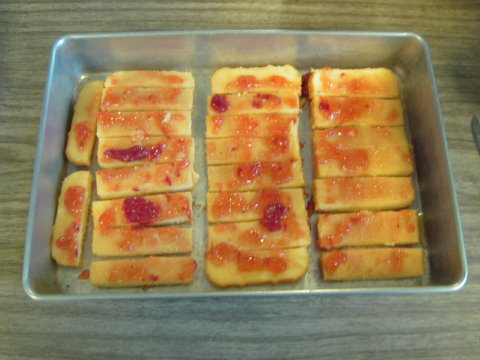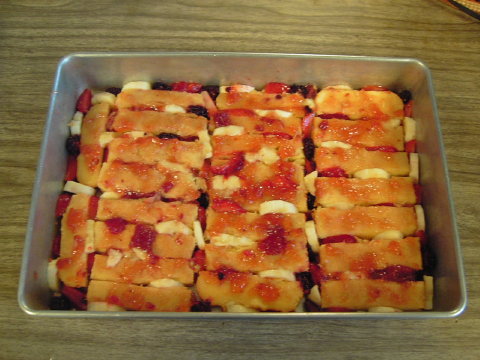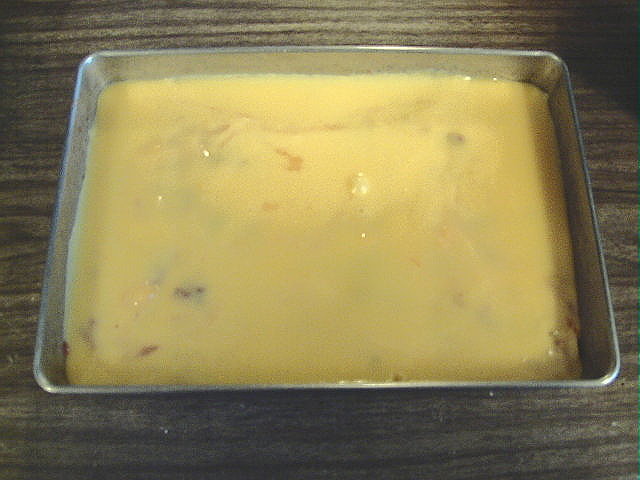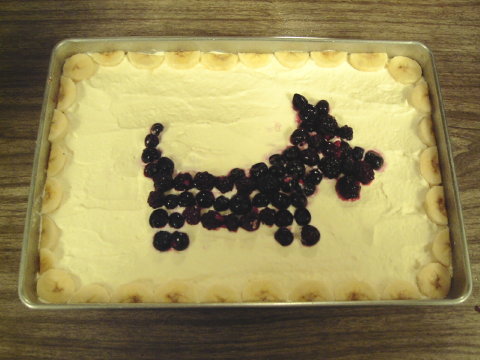This is a variation on the traditional English Sherry Trifle. The recipe
is suitable for many further variations according to taste and available
ingredients. The Sherry is an important component because it gives the
distinctive flavour. All other ingredients can be varied if desired, but
should be “soft” to give a smooth texture.
Ingredients:
| 1 | Pound cake |
| 4 tbsp | jam (e.g., marmalade, strawberry) |
| 1 cup | sweet or “cream” Sherry |
| 250 gm | soft fruits (e.g., blueberries, strawberries) |
| 2 | ripe bananas |
| 625 ml | milk |
| 3 tbsp | custard powder (e.g., Bird’s) |
| 4 tbsp | sugar |
| 500 ml | whipping cream |
| 1 tsp | vanilla extract |
Directions
|
. . . |





